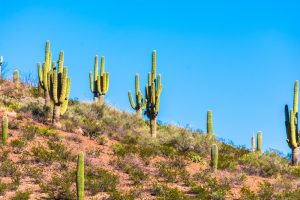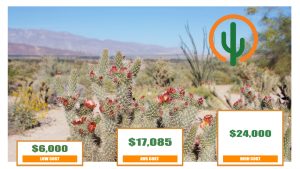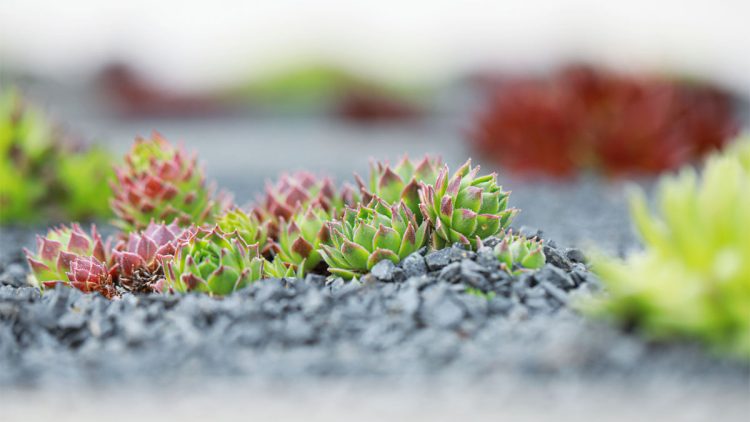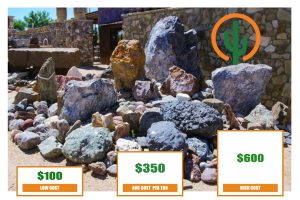Top Xeriscaping Ideas 2024

Find some of the best xeriscaping ideas for your yard right here!
Cottage Gardens
Traditional cottage gardens feature plants in close proximity. This is done by design to eliminate any areas where water could possibly be wasted. Additionally, most classic cottage flowers are drought-resistant and can experience a full three seasons of color.
Some flowers that will light up your landscape include iris, Sedum, Heuchera and Dianthus. All of these are very colorful and easy to care for. Deadheading spent blooms will help to conserve moisture.
Succulents In Containers
Yes, container gardening can be tricky for xeriscape gardeners because these plants will need plenty of water. Well, the solution is pretty simple: only use succulents! Succulents do not need a lot of water, they simply require sunshine.
Terra cotta pots are ideal because they help retain some moisture. Of course, you can choose ceramic, clay or resin pots of any style for your garden. The ability to move these containers around will give you a lot of flexibility, design-wise.
Use Native Plants
The good news is you do not have to live in a dry climate to make your xeriscaping a success. Xeriscaping simply requires using plants that thrive with the typical rainfall they experience.
For a place like Arizona, that means plants that deal well with a dry and arid climate. Finding plants that thrive in your area is essential since this means less watering and maintenance for you.
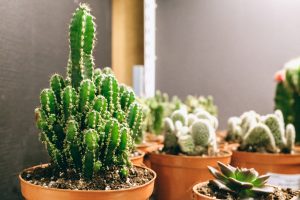
Follow The Sun
Your yard will undoubtedly tell you what thrives in the area. Start by grouping plants together based on their sunshine needs. Pay attention to sunlight and shade patterns throughout the day. This will ensure that your foliage doesn’t dry out or rot.
A good rule of thumb is to place plants that need lots of sunlight on the western side of the yard. These plants will then bask in the rays for the majority of the day.
Pine Bark Mulch
As we all know mulch is very effective for conserving moisture. Some mulches will contain herbicides or pesticides which aren’t goof for wildlife or gardeners.
Opt for natural mulch options like pine bark mulch instead. The shredded form of pine bark mulch covers large areas and looks great throughout the seasons.
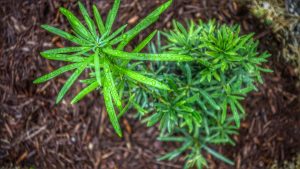
Rock Gardens
You are already halfway to creating a xeriscaped garden if you already have rock walls or terraces on your property. Rocks that are placed closely together will allow moisture to stay in place longer.
There are also many ground covers and low growing plants that can flourish in tight spaces without much soil. Allow them to spill over the rocks to create an aesthetically-pleasing addition to your yard.
Drought-Tolerant Annuals
A common misconception of annuals is they need lots of water. This is wrong! There are numerous annuals with minimal water requirements.
These annuals include Portulaca, cosmos, zinnias and marigolds. These plants will require more water if they are planted in pots, however.
Add Shade Trees
While sunshine is very important for xeriscaping, shade is too. Adding shade trees to the yard can cool the landscape by an estimated 20 degrees.
Cool plants are also hydrated plants. This creates more water savings. Shade, though, can mean more than just adding trees. Any tall structures added to the yard can help your plants thrive long-term.

Desert Plants For Sale
If you are interested in increasing the beauty of your landscape by buying desert plants, stop by our convenient location at 33840 N. Cave Creek Rd., in Cave Creek. For customers interested in our landscaping services, give us a call at (480) 488-9455 to schedule a visit to your home.
More Articles About Arizona Landscaping
- Tips For Growing Indoor Cactus
- Wood Chips Vs Mulch
- Desert Landscaping Ideas
- 10 Incredible Saguaro Cactus Facts
- Where To Buy Saguaro Cactus
- How To Save A Dying Cactus
- How To Bring A Dead Palm Tree Back To Life
- Landscaping Prices In Arizona
- Landscape Boulders Cost
- How To Take Care Of A Cactus In Arizona | Gardening Tips
- Desert Shrubs
- When are the Saguaro Cactus in Bloom in AZ?
- Mulch vs Compost | Differences
- Garden Soil Vs. Potting Mix | Differences
- What Type Of Water Fountain Should I Buy?
- What is Xeriscape?
- The Benefits of Ground Covering Plants
- Desert Plants
- Common Desert Plants Found in Arizona
- Garden Water Fountains
- Types of Cactus
- Different Types of Water Fountains for Your Garden
- Desert Landscaping Phoenix
- Sonoran Desert Landscape Rocks
- Arizona Xeriscape Gardening


